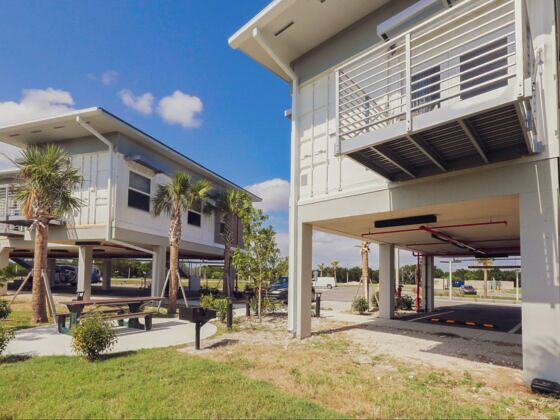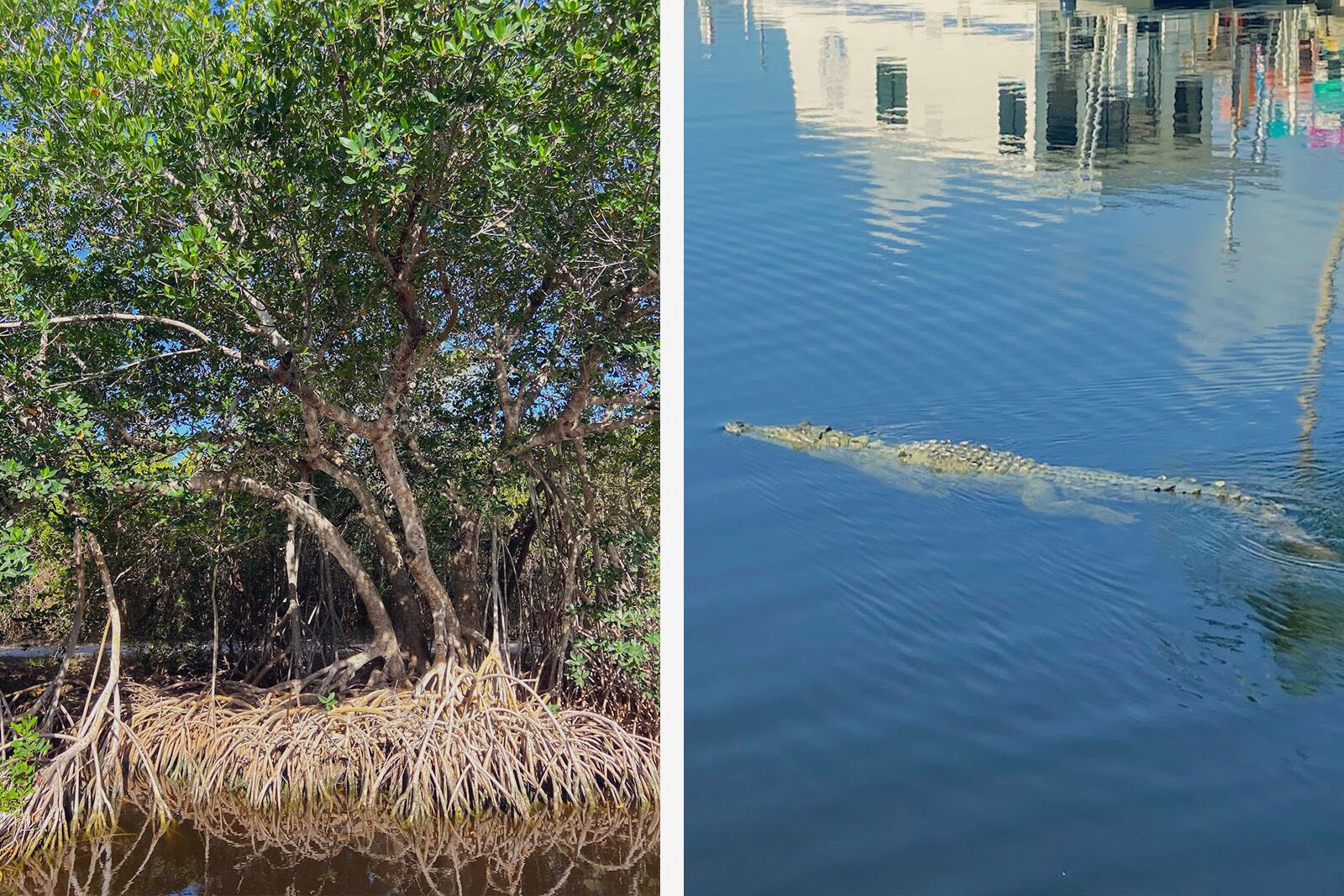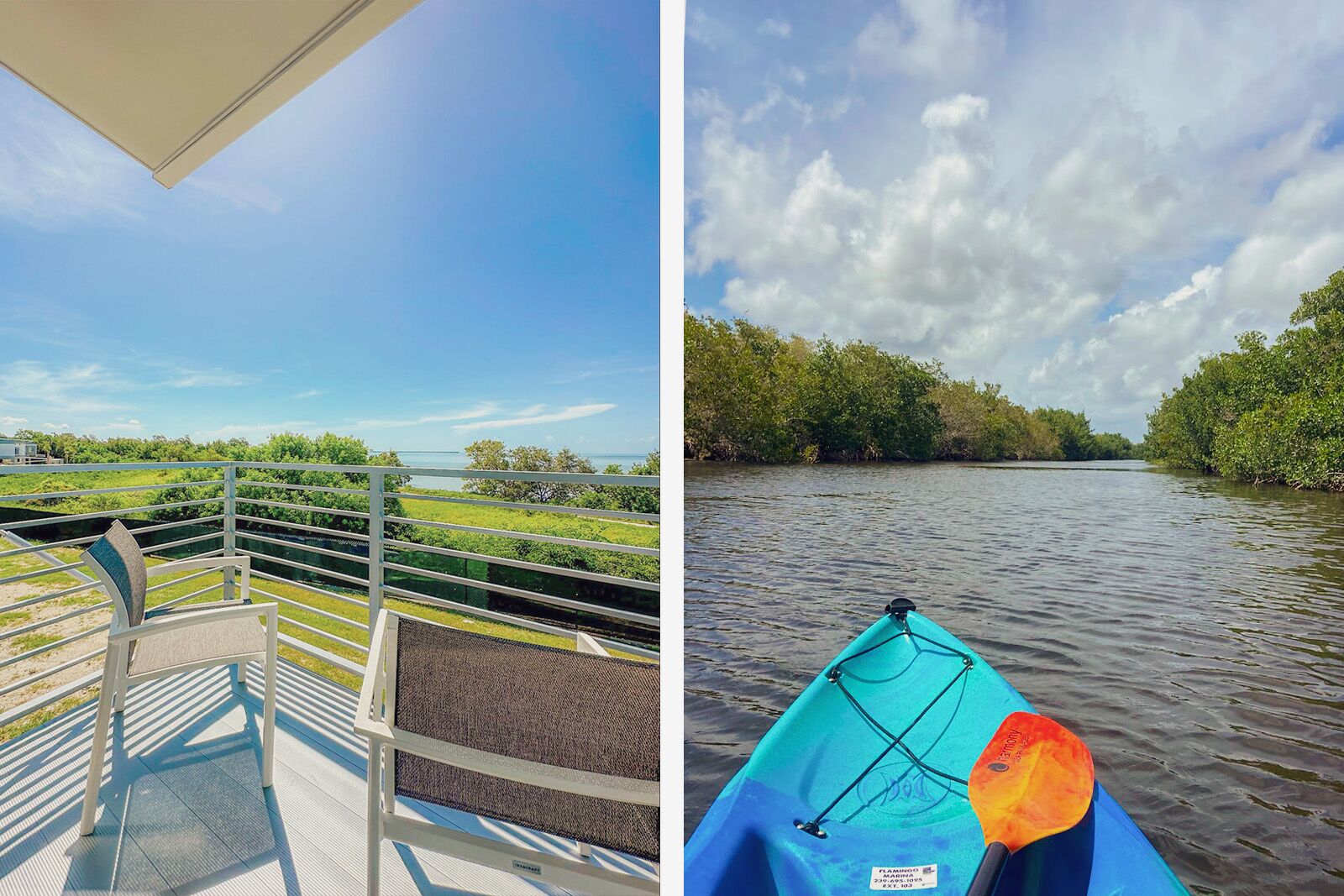At the end of the road — literally — there’s a place where pavement gives way to sawgrass and silence. It’s a place where GPS service flickers out, and instead of streetlights, you watch the sky burn pink over waterlogged mangroves. This is Flamingo, the southernmost point of mainland Florida and the heart of Everglades National Park. And for the first time in decades, it’s possible to stay here — not just pass through.

This Serene, Sustainable Lodge Is Everglades National Park’s Only Hotel, and It’s Pretty Perfect
The newly opened Flamingo Lodge and Restaurant, perched at the edge of Florida Bay, marks a quiet yet meaningful turning point for visitors to Everglades National Park: the return of overnight comfort stays within park boundaries. Decades after hurricanes ravaged the original lodge, the new property rises on stilts — resilient and humble in its elegance. More than just a hotel, Flamingo Lodge is a statement about restoration, about presence, and about the art of staying put in a place that’s constantly moving.

Photo: Tess St. John
Arriving at Flamingo felt like crossing a threshold — from Miami’s constant motion
and the humid lowlands outside Homestead, a city in Miami-Dade County that’s bounded by the Biscayne and Everglades National Parks — into something older, wilder, and much more peaceful. The lodge itself is unassuming at first glance: sturdy modular buildings set high above the marsh, outfitted with subtle energy-saving systems that quietly blend into the background. Sustainability here isn’t a marketing tagline; it’s how the place breathes.
My room looked directly out over the Florida Bay, where the effervescent turquoise waters stretched to meet the deep ocean blue at the horizon. Overnight stay prices range from $260 for a one-bed to $370 for a two-bed in the shoulder season (April-May). Inside, a small kitchen, modern bathroom, and soft, simple furnishings gave the space a sense of ease. There was no TV humming in the background, just a sliding glass door and the endless murmur of the wetlands. Early that first evening, while sitting on my balcony, I watched a manatee surface for a breath; though it was just a snout sighting, I waited patiently for it to come back up. It felt less like arriving at a hotel and more like entering a living, breathing ecosystem.

Photos: Flamingo Lodge and Restaurant
Dinner that night was at the Flamingo Restaurant — a low-key but lively space, alive with the hum of travelers swapping stories in accents from all over. The menu leaned into regional flavors: grilled fish, hearty hamburgers, and plant-based grain bowls. I ordered the blackened mahi wrap, bright with citrus and spice, and ate outside beneath the palms where crows lurked in the trees, waiting for the next tourist to walk indoors for salt packets and maybe abandon a fry or two.
Dawn came early and with it a gentle compulsion to rise. From my balcony, the sunrise over the bay lit in pale gold, and the mangroves took on the color of old copper. I went for a run along the Guy Bradley Trail, named for one of the Everglades’ first wildlife protectors, with my camera ready. Great egrets stalked the shoreline, their reflections unbroken by the slightest ripple. The air was thick with the green, sweet smell of salt marsh. I ran past campers waking up with the morning glow and bikers out to get in some touring before the Florida heat took them out on the water.
After breakfast — strong coffee and a banana sunflower smoothie from the lodge restaurant — it was time to explore deeper into the backcountry. I checked in for the Backcountry Boat Tour, a highlight of the weekend. We boarded a flat-bottom boat and headed up the Buttonwood Canal, the tannic water reflecting the mangroves like a mirror.
Our naturalist guide, Ry, pointed out sunning crocodiles, bromeliads clutching branches, and the elegant sweep-soar of the tri-colored heron. She spoke candidly about the Everglades’ fragility — its role as a nursery for marine life, a carbon sink, and a frontline in the battle against rising seas. The captain slowed down the boat to show us the “famous” red mangrove tree that grew from the water like a web of suspended nerves, its roots splayed in every direction like fingers reaching for balance.

Photos: Tess St. John
As the canal opened up into Coot Bay, the air seemed to change — saltier, looser, thick with the quiet tension of open water. The trees thinned, and the horizon widened into a calm expanse where dolphins sometimes surfaced and tarpon flashed like quicksilver beneath the boat.
“Tell me about this elusive Florida panther,” I had to ask Ry. Her eyes lit up at the question.
“Man, I’ve never seen one in all my years here, but they live in the northwest region of the park, there’s up to 200, and they strictly roam between midnight and 4 AM.”
While bummed to hear I wouldn’t be driving alongside a panther running at full speed, I was relieved to hear that they still roamed nearby.
Returning to shore — as another crocodile welcomed our return, swimming alongside the boat — we joined a property overview tour with the operations manager, Dee, to view the broader range of accommodations at Flamingo: the charming eco-tents tucked amid trees overlooking the Bay, the floating houseboats bobbing in the marina, and classic tent campsites spaced generously apart. Accessibility features, like wheelchair ramps and ADA-friendly rooms, made the wilderness more reachable without stripping it of its wildness.

Photo: Tess St. John
Lunch was relaxed back at the restaurant — a chicken salad and a slice of key lime pie that reminded me of home. Afterward, we drifted into the Guy Bradley Visitor Center, newly rebuilt and more ambitious in scope than before. Exhibits explored the Everglades as a meeting point of histories: the Calusa and Seminole peoples, the early settlers and conservationists, fun facts about manatees, the differences between an alligator and a crocodile, and the nature of the migrating great egret. I got a particular kick out of the “mosquito meter,” which was thankfully on the better half of “enjoyable” while I was there and made me hope never to encounter the “horrible” or “insane” side of the meter.
By midafternoon, the urge to be on the water pulled again. A group of us rented kayaks from the marina and spent a few hours gliding along the tidal flats and narrow creeks, slipping under low-slung mangrove arches and secretly hoping a crocodile decided to join alongside. Flamingo’s low-impact activities made it easy to explore without leaving a heavy footprint — no roaring crowds, just the swoosh of paddles on discovery and the wisping sound of a casted rod.

Photos: Tess St. John
As the sun began to set, we gathered along the shoreline near the amphitheater at the end of the Guy Bradley Trail to watch the sky turn molten orange. Sunset here wasn’t just a daily occurrence — it felt like a stage set for appreciating nature’s great creation. The silence was broken only by the faint rustle of water birds settling in for the night and crickets on the move. It reminded me of what Ry said on the boat earlier that morning: “The Everglades speak in whispers.”
On my last morning, after a final ride along the deserted bike paths — just me, the mist, and a handful of creatures lurking in the sawgrass — I lingered on my balcony, reluctant to leave.
Checking out felt bittersweet. The Flamingo Lodge isn’t just a place to rest your head; it’s a quiet classroom, a chance to reimagine what it means to visit a national park. You don’t conquer the Everglades. You wait, you watch, and eventually, if you’re lucky, you’re allowed to belong.
Driving north through the park, past West Lake and Mahogany Hammock and the famously alligator-studded Anhinga Trail, I realized Flamingo had done something rare: It didn’t ask visitors to consume the landscape. It asked them to witness it — and to leave it better than they found it.